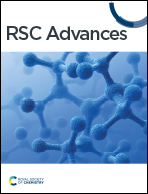Theoretical study of Ponceau S oxidation using the electro-Fenton process under optimal operational conditions
Abstract
Electrochemical methods as one of the Advanced Oxidation Processes (AOPs) have been applied effectively to the degradation of recalcitrant organic molecules in aqueous solutions. In the present study, the performance of the electro-Fenton (EF) process on the oxidation of Ponceau S(PS) dye was studied. The experimental study performed at the optimal factors like the solution pH, the PS concentration and the ferrous ions dose provided 74.35% of PS degradation. The results, however, showed a decreased removal efficiency of PS when using sodium sulphate as the supporting electrolyte. From a theoretical point of view, the hydroxyl radical being an electron acceptor and the PS dye an electron donor, from a theoretical point of view, the hydroxyl radical being an electron acceptor and the PS dye an electron donor, furthermore, the nitrogen atom 2N being the most nucleophilic site of the PS dye with the most electrophilic site of the hydroxyl radical being the oxygen atom, the first stage of the reaction between PS and the hydroxyl radical was suggested.



 Please wait while we load your content...
Please wait while we load your content...